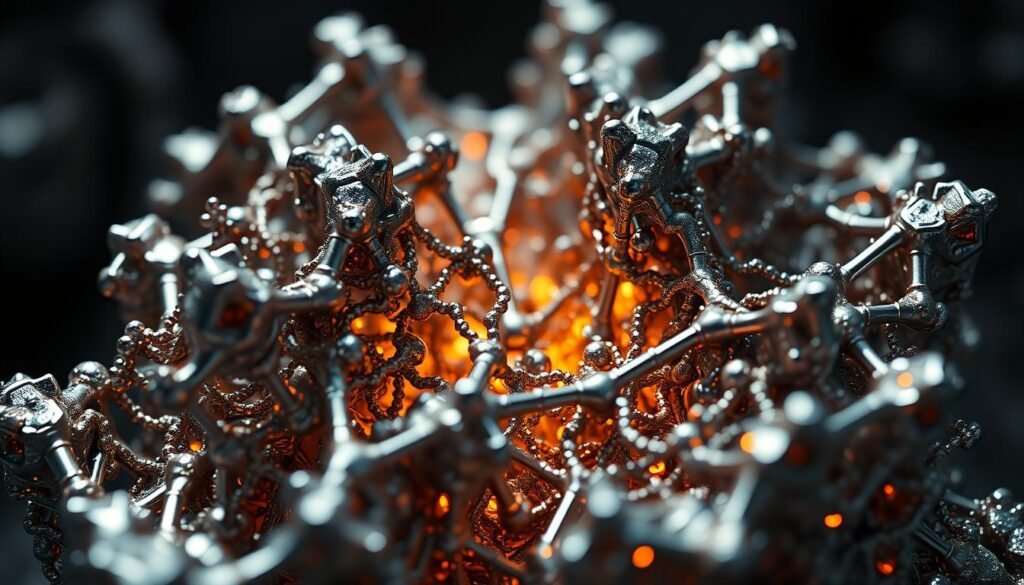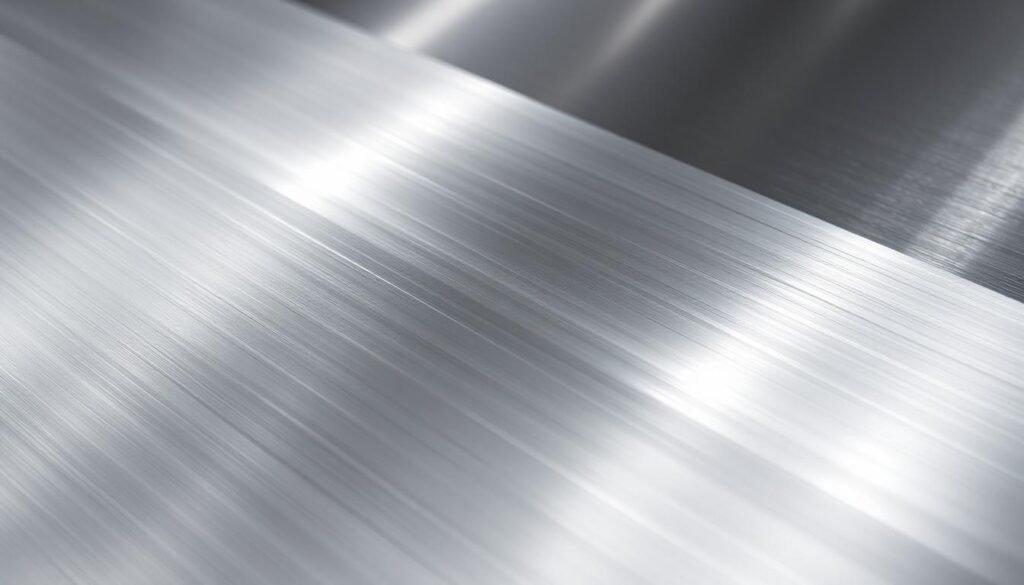The question of whether certain types of stainless steel are magnetic often puzzles many. The answer isn’t straightforward because stainless steel isn’t a single material but a family of iron-based alloys.
These alloys contain at least 10.5% chromium, giving them their characteristic corrosion resistance. Different types exhibit varying magnetic properties depending on their crystal structure and chemical composition.
316 stainless steel is a widely used austenitic grade known for its excellent corrosion resistance, particularly in chloride environments. Understanding its magnetic properties is crucial for proper material selection in applications where these properties might affect performance.
This article will explore the science behind magnetism in stainless steels and address common misconceptions about their magnetic properties.
Understanding Stainless Steel and Magnetism
To comprehend the magnetic behavior of stainless steel, it’s essential to consider both its chemical composition and its crystal structure. Stainless steel is an alloy that contains various elements, including iron, chromium, and nickel, which influence its magnetic properties.
What Makes Steel Magnetic or Non-Magnetic
The magnetism of stainless steel is primarily determined by its chemical composition and crystalline structure. All stainless steels contain iron, which is inherently ferromagnetic. However, the addition of other elements like chromium, nickel, and molybdenum can significantly alter the magnetic properties of the metal.
For instance, the presence of nickel in austenitic stainless steels stabilizes the austenitic structure and suppresses the formation of ferromagnetic phases. The table below summarizes the key factors influencing magnetism in stainless steel:
| Factor | Influence on Magnetism |
|---|---|
| Chemical Composition | Presence of iron and other elements like chromium, nickel, and molybdenum |
| Crystalline Structure | Austenitic, ferritic, or martensitic structure |
| Processing Methods | Cold working, annealing, or other processing techniques |
Crystal Structures and Their Effect on Magnetism
The crystal structure of stainless steel can be categorized into three main types: austenitic, ferritic, and martensitic. Each type has different magnetic characteristics due to its unique structure. Ferritic and martensitic stainless steels have a body-centered cubic (BCC) crystal structure, allowing them to exhibit strong ferromagnetic properties.

In contrast, austenitic stainless steels, such as the 300 series (including 316 stainless steel), have a face-centered cubic (FCC) crystal structure that typically renders them non-magnetic in the annealed condition. Understanding the relationship between crystal structure and magnetism helps explain why different types of stainless steel respond differently to magnetic fields.
Is 316 Stainless Steel Magnetic?
The magnetic behavior of 316 stainless steel is an essential characteristic that determines its suitability for various applications. 316 stainless steel is classified as an austenitic stainless steel, which generally exhibits non-magnetic properties in its annealed state due to its face-centered cubic crystal structure.
The General Rule: 316 Stainless Steel’s Magnetic Properties
Austenitic stainless steels, including 316 stainless steel, are typically non-magnetic because they contain high amounts of austenite. The high nickel content (10-14%) in 316 stainless steel stabilizes the austenitic phase, preventing the formation of ferromagnetic structures under normal conditions. As a result, 316 stainless steel should show minimal to no response when a magnet is placed against it in its standard condition.
However, it’s worth noting that austenitic grades can display slight magnetism on mechanically worked edges, such as the edge of a sheet, due to the formation of ferrite in those areas.
Comparing 316 to Other Stainless Steel Types
When comparing 316 stainless steel to other common stainless steel types, it’s clear that different grades exhibit varying magnetic properties. For instance, 304 stainless steel, another austenitic grade, is also non-magnetic in its annealed state but may become more magnetic when cold worked.
In contrast, ferritic stainless steels like grades 409, 430, and 439 are inherently magnetic due to their high ferrite content and body-centered cubic crystal structure. Martensitic stainless steels, such as grades 410, 420, and 440, are also magnetic because of their high iron content and particular crystal structure.

Despite its generally non-magnetic nature, 316 stainless steel offers superior corrosion resistance compared to magnetic stainless steel grades, particularly in chloride environments. This makes it a preferred choice for marine applications. The addition of molybdenum in 316 stainless steel enhances its resistance to pitting corrosion compared to 304 stainless steel, though both share similar magnetic properties.
Why 316 Stainless Steel Can Become Magnetic
Despite being generally considered non-magnetic, 316 stainless steel can exhibit magnetic behavior under certain conditions. This phenomenon often leads to confusion regarding the material’s identification and properties.
Cold Working and Its Effects on Magnetism
Cold working, which involves mechanical deformation at temperatures below the recrystallization temperature, is a primary reason austenitic stainless steels like 316 can become magnetic. Processes such as bending, drawing, machining, and thread cutting can induce a phase transformation in the material’s crystal structure, converting some of the austenite to martensite, which is magnetic.
The degree of magnetism induced by cold working depends on the severity of the deformation and the specific composition of the 316 stainless steel. This means that the more a piece of 316 stainless steel is worked on, the more likely it is to exhibit magnetic properties.
Cast vs. Wrought 316 Stainless Steel
Another critical factor is the difference between cast and wrought 316 stainless steel. Cast 316 stainless steel, technically referred to as CF-8M, typically contains small amounts of ferrite in its microstructure, making it slightly magnetic compared to wrought (rolled or forged) 316 stainless steel. The casting process often results in a different microstructure, with the chemistry balanced to include 5-15% ferrite for improved casting properties and reduced hot tearing.
Chemical Composition Variations
Variations in chemical composition, even within the specified range for 316 stainless steel, can significantly affect magnetic properties. The ratio of nickel to chromium is particularly important, as higher chromium content or lower nickel content within the allowable range can make the material more susceptible to becoming magnetic when cold worked. Some manufacturers may adjust the composition, such as reducing nickel content and increasing manganese, to maintain the austenitic structure while reducing costs, potentially affecting magnetic properties.
In conclusion, the magnetic properties of 316 stainless steel are influenced by a combination of factors including cold working, the manufacturing process (cast vs. wrought), and variations in chemical composition. Understanding these factors is crucial for accurately identifying and utilizing 316 stainless steel in various applications.
Testing and Identifying 316 Stainless Steel
To verify the authenticity of 316 stainless steel, one must look beyond the magnet test and employ more reliable methods. While the magnet test is commonly used, it can be misleading due to the various factors that influence the magnetic properties of 316 stainless steel.
Beyond the Magnet Test: Proper Identification Methods
The magnet test is not always a reliable method for identifying 316 stainless steel. Cold working, casting processes, or composition variations can induce magnetic properties in genuinely austenitic stainless steel. More reliable identification methods include chemical spot tests, such as the “Moly Test,” which verifies the presence of molybdenum—a key element distinguishing 316 from other grades like 304.
X-ray fluorescence (XRF) analyzers provide the most accurate identification by determining the exact chemical composition, although the equipment is expensive. Positive Material Identification (PMI) testing is also widely used in industrial settings to verify material compliance.
Corrosion Resistance vs. Magnetic Properties
The corrosion resistance of 316 stainless steel remains excellent even when it exhibits some magnetic properties due to processing. It’s crucial to understand that magnetic properties and corrosion resistance are influenced by different aspects of the material. While magnetic properties are affected by the crystal structure, corrosion resistance is primarily determined by the chemical composition.
In marine environments or applications exposed to salt air, 316 stainless steel may still corrode despite proper identification. Additional protection methods like painting or electropolishing may be necessary. When specifying 316 stainless steel for applications where non-magnetic properties are critical, it’s essential to request material to standards like AMS5360, ensuring truly non-magnetic properties.
Conclusion
Determining the magnetic properties of 316 stainless steel involves examining its crystal structure, composition, and processing history. In its standard annealed condition, 316 stainless steel is generally non-magnetic due to its austenitic crystal structure, which is stabilized by its nickel content.
However, the magnetic properties of 316 stainless steel can vary. It can become partially magnetic when cold worked, cast instead of wrought, or when its composition varies within the allowable specification range. Understanding the differences between austenitic, ferritic, and martensitic stainless steels helps explain their varying magnetic properties.
The magnetic properties should not be the sole criterion for material identification; chemical testing provides more reliable verification of grade and composition. For applications where non-magnetic properties are critical, it’s essential to specify this requirement when ordering 316 stainless steel.
Despite potential magnetic properties, 316 stainless steel remains one of the most corrosion-resistant grades, particularly in chloride environments, making it valuable for marine applications. The relationship between crystal structure, chemical composition, and processing history determines both the magnetic properties and corrosion resistance of stainless steels.
When selecting stainless steel for specific applications, consider both magnetic properties and corrosion resistance requirements to ensure optimal performance. This comprehensive understanding will help in making informed decisions for various industrial applications.
